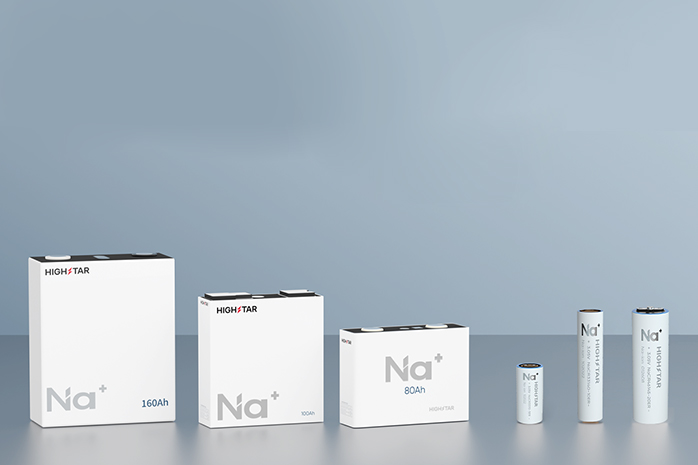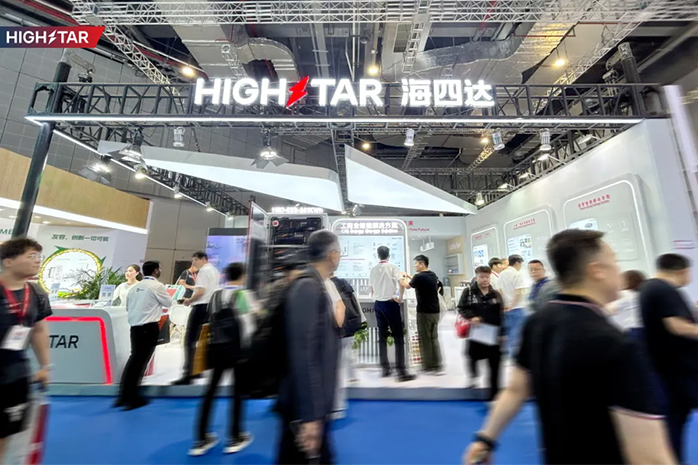Sodium Ion vs Lithium Ion Battery: Which Are the Differences?
You've probably heard the buzz about sodium-ion batteries lately. Maybe you're wondering if they'll replace the lithium-ion batteries in your phone, or if you should consider them for your next project. As a battery cell manufacturer that produces both technologies, we at Highstar get this question daily - and we're here to give you the straight facts.
The battery world is changing fast, and making the right choice between sodium-ion and lithium-ion isn't always straightforward. Each technology has its sweet spots, and understanding these differences will help you pick the perfect power source for your needs. Let's break down what really matters when comparing these two battery technologies.
The Basic Chemistry Difference
First things first - what's actually different about these batteries? Both work on similar principles, moving ions between electrodes to store and release energy. The key difference? One uses sodium ions, the other uses lithium ions. Sounds simple, but this change affects everything else.
Lithium is the third lightest element on the periodic table, which gives lithium-ion batteries their famous high energy density. You can pack a lot of power into a small space. That's why your smartphone battery lasts all day despite being incredibly thin. Sodium, on the other hand, is heavier and bulkier - about three times the weight of lithium.
But here's where it gets interesting. Sodium is the sixth most abundant element on Earth, found in regular salt. Lithium? It's much rarer and concentrated in just a few countries. This fundamental difference shapes everything from battery cost to global supply chains. As battery researcher Dr. Emma Chen noted in a recent industry conference, "The abundance of sodium could democratize energy storage technology globally."
Our sodium ion battery solution leverages these chemical differences to create batteries that excel in specific applications. While they might not fit in your pocket as easily as lithium-ion, they bring other advantages to the table that we'll explore next.
Performance and Energy Density Comparison
Let's talk real-world performance. When you're choosing a battery, you care about how long it lasts, how fast it charges, and how much power it delivers. Here's how sodium-ion and lithium-ion stack up:
Energy Density Showdown:
|
Battery Type
|
Energy Density
|
Weight for 1kWh
|
Best Use Case
|
|
Lithium-ion
|
150-260 Wh/kg
|
3.8-6.7 kg
|
Portable devices, EVs
|
|
Sodium-ion
|
100-150 Wh/kg
|
6.7-10 kg
|
Stationary storage, backup power
|
Lithium-ion batteries typically pack 150-260 watt-hours per kilogram, while our sodium-ion cells achieve 100-150 Wh/kg. For your smartphone or laptop, that density difference matters - nobody wants a phone that weighs like a brick. But for stationary applications like telecom backup power or grid storage, weight isn't as critical.
What sodium-ion lacks in density, it makes up for in other areas. Our cylindrical sodium ion cell models deliver discharge rates up to 8C, meaning they can dump power fast when you need it. They also maintain performance across a wider temperature range, working efficiently from -40°C to 80°C. Try using your phone in those temperatures - lithium-ion batteries struggle in extreme cold.
Cost Analysis and Raw Materials
Here's where sodium-ion batteries really shine - your wallet will thank you. The raw materials for sodium-ion batteries cost about 30% less than lithium-ion equivalents. Why? It all comes back to abundance and supply chains.
Lithium prices have roller-coastered in recent years, jumping from 6,000pertontoover6,000 per ton to over 6,000pertontoover70,000 at peak, then settling around 20,000.Thesewildswingsmakeplanningandbudgetingtoughformanufacturers.Sodiumcarbonate?It′sbeensteadyataround20,000. These wild swings make planning and budgeting tough for manufacturers. Sodium carbonate? It's been steady at around 20,000.Thesewildswingsmakeplanningandbudgetingtoughformanufacturers.Sodiumcarbonate?It′sbeensteadyataround200-300 per ton for years. When you're building large-scale energy storage solutions, those material costs add up fast.
But it's not just about the elements themselves. Sodium-ion batteries can use aluminum current collectors on both electrodes, while lithium-ion needs expensive copper for the anode. They also don't require costly cobalt or nickel in most formulations. Add it all up, and sodium-ion batteries can cost 20-30% less per kWh at scale.
Cost Breakdown Example (100kWh system):
● Lithium-ion: $15,000-20,000
● Sodium-ion: $10,000-14,000
● Savings: $5,000-6,000
These savings make sodium-ion perfect for applications where you need lots of storage but aren't constrained by space or weight.
Safety Features and Thermal Stability
Safety isn't just another feature - it's the foundation of good battery design. Both technologies are generally safe when manufactured properly, but they handle abuse differently.
Lithium-ion batteries can experience thermal runaway if damaged or overheated. You've probably seen news stories about battery fires in phones or electric vehicles. While rare, these incidents happen because lithium-ion cells can reach temperatures over 800°C during thermal runaway. Our safety systems prevent this, but the risk exists.
Sodium-ion batteries are inherently safer. They're less prone to thermal runaway and typically stop at lower temperatures if problems occur. Our testing shows sodium ion battery pack systems passing nail penetration tests without catching fire - try that with most lithium-ion cells! This safety advantage makes them ideal for residential energy storage or anywhere fire risk must be minimized.
We've also built advanced safety features into both battery types. Our Battery Management Systems (BMS) monitor temperature, voltage, and current continuously. But with sodium-ion, you're starting from a safer baseline. As one customer told us, "I sleep better knowing my home energy storage uses sodium-ion technology."
Environmental Impact and Sustainability
You care about the planet - we all do. The environmental footprint of batteries extends from mining to recycling, and here's where the technologies diverge significantly.
Lithium mining often requires massive amounts of water in desert regions where water is scarce. In Chile's Atacama Desert, lithium extraction uses 500,000 gallons of water per ton of lithium. Sodium production, mainly from seawater or underground deposits, has a much lighter environmental touch.
The carbon footprint tells a similar story. Manufacturing sodium-ion batteries generates about 20% less CO2 than lithium-ion equivalents. Plus, sodium-ion batteries are easier to recycle. They can be discharged to zero volts safely, making handling simpler, and the materials are less toxic overall.
Environmental Comparison:
● Water usage: Sodium-ion uses 90% less water in material production
● Carbon footprint: 20% lower for sodium-ion manufacturing
● Recyclability: Sodium-ion materials easier and cheaper to recover
● Transportation: Sodium-ion can ship at zero charge (safer)
Our commitment to sustainability goes beyond just making batteries. We're building a circular economy where today's batteries become tomorrow's raw materials.
Application Suitability Guide
Not every battery fits every job. Choosing between sodium-ion and lithium-ion depends on what you're powering. Let's match the technology to your needs:
Lithium-ion excels in:
● Smartphones and laptops (weight matters)
● Electric vehicles (energy density crucial)
● Power tools (high power, compact size)
● Portable devices (every gram counts)
Sodium-ion dominates in:
● Grid-scale energy storage (cost per kWh rules)
● Backup power systems (safety first)
● Cold climate applications (temperature resilience)
● Stationary storage (weight less important)
Our customers using lithium ion batteries in use for power tools love the compact size and high discharge rates. Meanwhile, telecom companies choose our sodium-ion solutions for backup power because they prioritize safety, cost, and reliability over size.
The automotive industry presents an interesting middle ground. While most EVs use lithium-ion for range, sodium-ion works great for shorter-range vehicles like delivery vans or city buses where daily range requirements are predictable.
Future Technology Outlook
Where are these technologies headed? Both continue improving, but the development paths differ. Lithium-ion batteries are mature technology - improvements now come in increments rather than leaps. Researchers squeeze out 3-5% better energy density yearly through better cathode materials and manufacturing processes.
Sodium-ion technology is where lithium-ion was 15 years ago - rapidly improving with huge potential ahead. Our R&D team has already boosted energy density by 40% over the past five years, and we see pathways to match lithium-ion performance for many applications by 2030.
What's coming next:
● Solid-state versions of both technologies promise better safety and density
● Hybrid systems combining both battery types for optimal performance
● New cathode materials pushing sodium-ion density above 200 Wh/kg
● Manufacturing scale driving sodium-ion costs even lower
Major automakers are taking notice. Several have announced sodium-ion vehicle programs for 2025-2027. Grid storage deployments are accelerating globally. The question isn't whether sodium-ion will succeed - it's how fast it will grab market share.
Making the Right Battery Choice
So which battery technology should you choose? Like picking between a sports car and a pickup truck, it depends on your job. Both have their place in our energy future.
Choose lithium-ion when you need maximum energy in minimum space. Your smartphone, laptop, or long-range EV still needs lithium-ion's density advantage. The technology is proven, supply chains are established, and performance continues improving steadily.
Pick sodium-ion when cost, safety, and sustainability top your priority list. For stationary storage, backup power, or applications in extreme temperatures, sodium-ion delivers better value. As a battery pack manufacturer, we're seeing explosive growth in sodium-ion demand for these applications.
At Highstar, we don't believe in one-size-fits-all solutions. That's why we've invested in both technologies, becoming pioneers in sodium-ion while maintaining leadership in lithium-ion. Our engineering team can help you analyze your specific needs and recommend the optimal solution.
Ready to explore which battery technology fits your project? Whether you need the compact power of lithium-ion or the cost-effective reliability of sodium-ion, we're here to power your success. Because the best battery isn't about the chemistry - it's about matching the right technology to your unique needs.

 Buy
Buy




